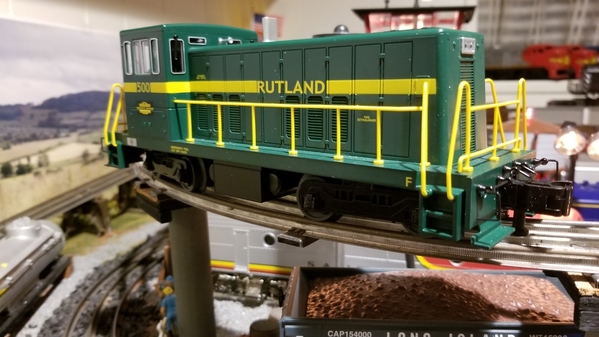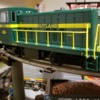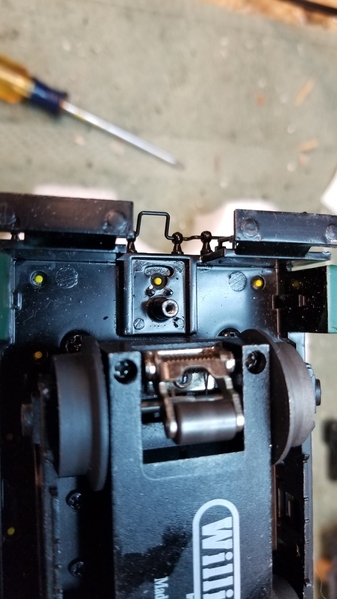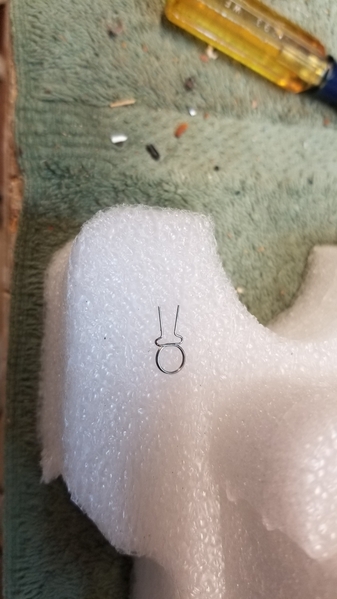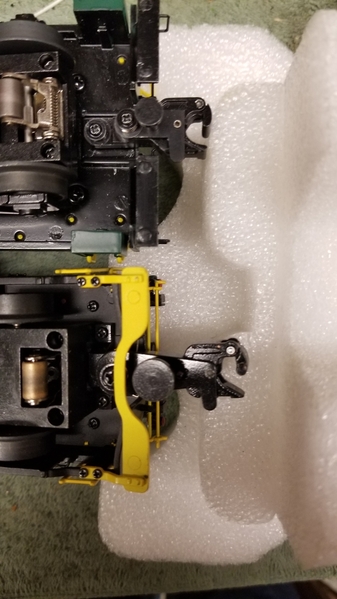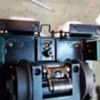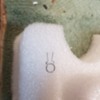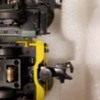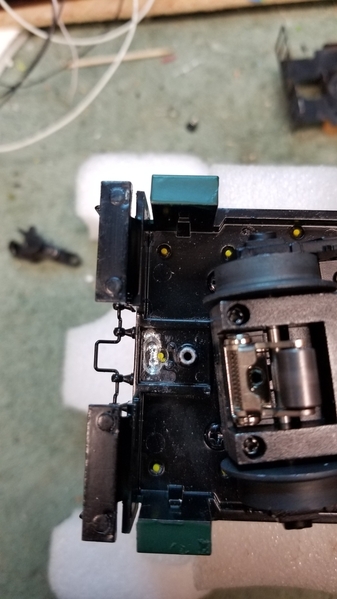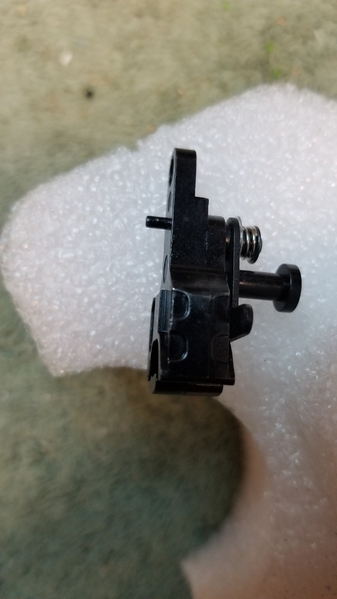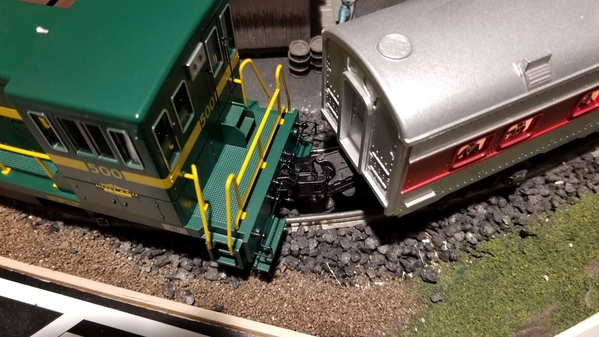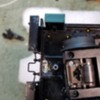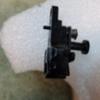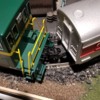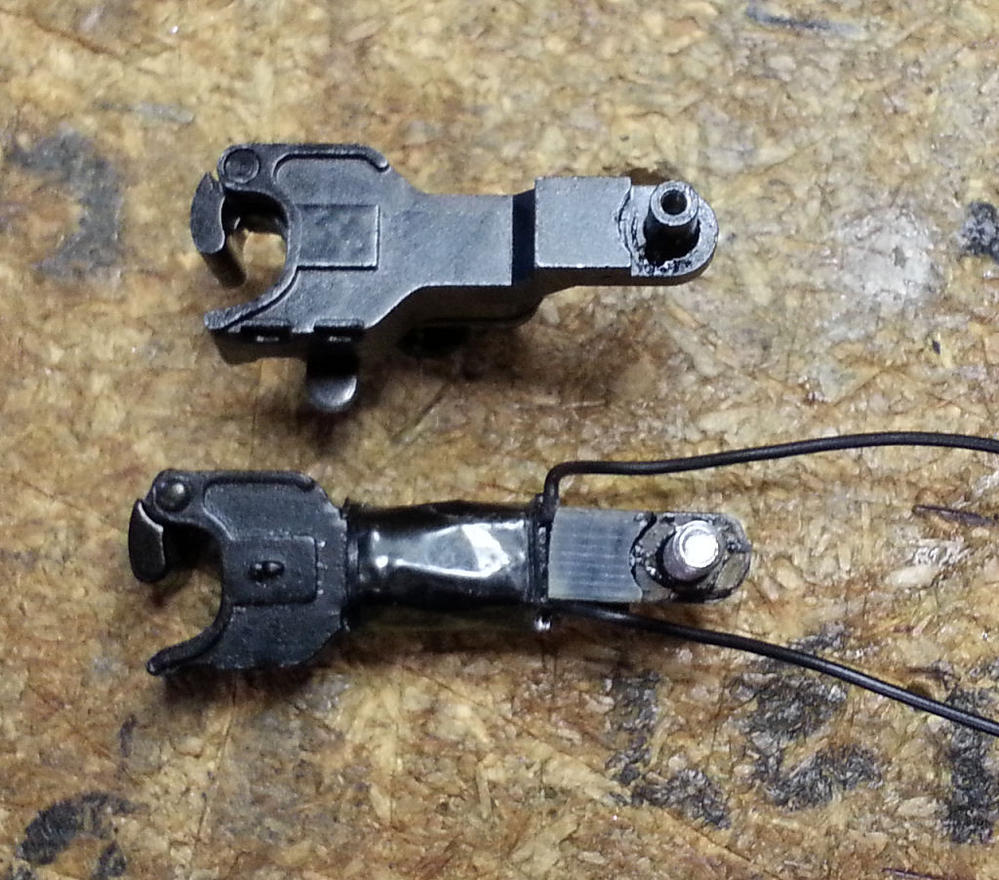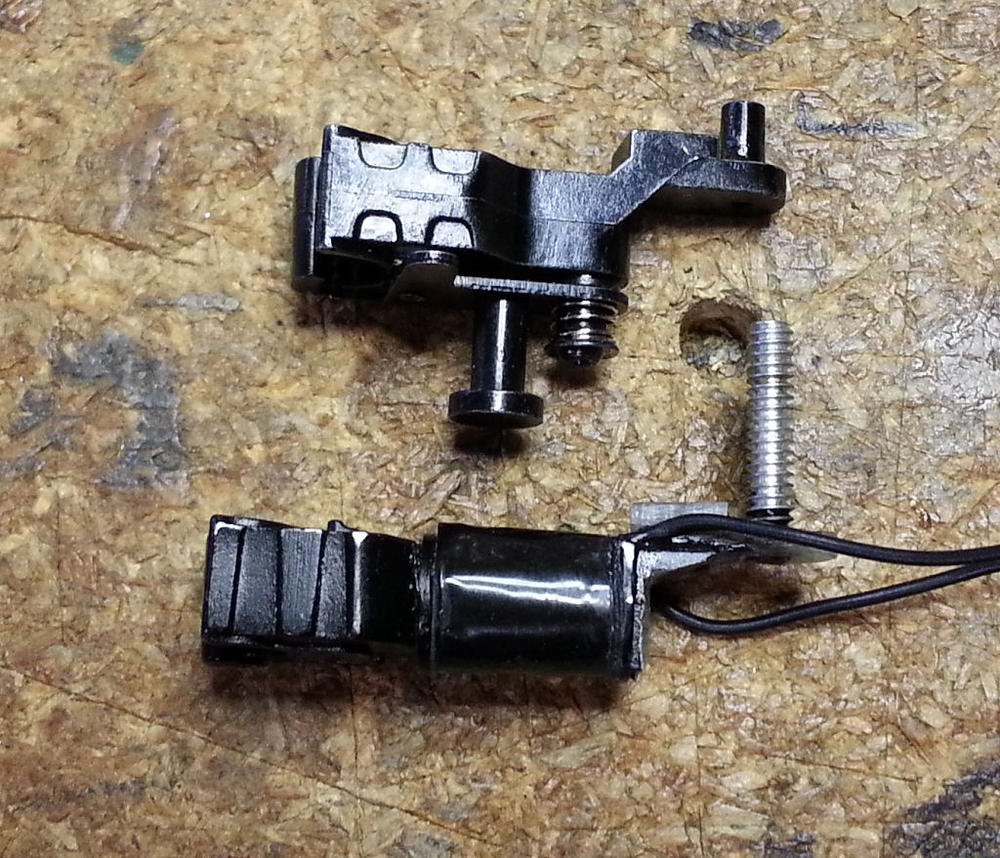Brianel K-Lineguy had some ideas back in June of 2021.
Manny, the problem is the "return spring" as you call it, is also the same spring that puts pressure on the coupler armature, which keeps the knuckle closed in place allowing you to pull a train without it immediately coming uncoupled.
The Lionel and K-Line diesels from the 1990's that came with plastic couplers did have a centering spring, which was nothing more than a Delrin plastic length off the back of the coupler, which inserted into a slit on the top of the engine truck frame, which kept the coupler centered.
I'll try to explain this as clear as I can without the use of photos. If you search around, you can find photos on the internet. But I do suppose you need to know exactly what you are looking for. Doing a generic search won't easily help.
If you look at your Williams engine, you have a C-clip which then holds a spring which is below the coupler armature. This is all held in place by a "T" shaped pin. Though you might not be able to see it without removing the motor truck from the frame, the rounded rear of the coupler is shaped like a roller coaster on the top side of it: The back side is higher and slopes down on each side. The "T" pin engages with this sloped opening, so as the coupler moves from left to right, the "T" pin rides up this slope.
This is basically a Lionel design. But when other companies clone the design, they often change things to avoid legal problems. Like for example, when you look at couplers on train cars, they all look the same. BUT they're NOT. Coupler knuckles from one brand may not work in another brand. The pins that hold the knuckle piece in the coupler are different lengths and diameters. So using parts from one brand to another brand, may not work without some tinkering first.
Back to the issue at hand....
On the Williams coupler (I'm almost certain the same part is used for the RMT Bang S-4 and the RDC Budd car) the slope is NOT gradual enough... it's too abrupt. Which results in what you're seeing: That the coupler seems stiff when it moves to and fro (left to right) thus derailing the first train car behind the engine.
There are 3 fixes, all of which I have done. All involve taking things apart.
One is to replace the "T" pin with a small small hex head screw. OR you can use a Dremel and cut off the extensions of the "T" shaped pin, making it more a upper case "I" shape. Both of these changes will eliminate the self-centering function of the coupler. Not a big deal for a small layout though. But you'll need to use your hand and sometimes manually center the coupler arm when doing some switching on your layout. But you'll still have an operating knuckle coupler that opens and closes.
The other fix is to use a Dremel with a grinding bit, and to reduce the sloped shape on the back side of the coupler arm assembly. So the whole thing has to come apart to do this. But doing this will allow the self-centering coupler feature to be retained, and will eliminate the first car derailment issue.
_____________
Again you might ask, why can't these things work right out of the box? Well again the issue is the designs. And when the competing companies are basically copying a Lionel design, albeit with minor changes, sometimes those minor changes are not for the better. Yep, they make it different, but not necessarily better. The engineers working for Lionel during the postwar years, really knew what they were doing for the most part. I've bought MTH versions of postwar Lionel items, like the Railking searchlight car. Brand new out of the box, the MTH car NEVER worked as well as my postwar Lionel searchlight car. I wish it had, but it didn't. Same goes for some of the MTH clones of Lionel accessories.
Take for example, the RMT S-4 Bang... there were many changes made on that from the original K-Line version, which K-Line altered from the original MARX version. The RMT S-4 is very hard to find these days because of those improvements. I sold a few a mine for more than double what I paid for them (a rarity in today's train market). BUT while many view the die cast couplers on the RMT S-4 as an improvement, they do the same thing that your Williams loco is doing. Never had that problem with the plastic couplers on the K-Line S-2 version. So... is it really an improvement?
OR as you noted, the RMT Bang was always advertised as an 027 friendly loco. But the original versions were derailing train cars, as you yourself noticed, so you have to enlarged the coupler openings on the frame. RMT took note of this problem, changed the design, and on later issues of the BANG, the openings for the couplers were enlarged.




